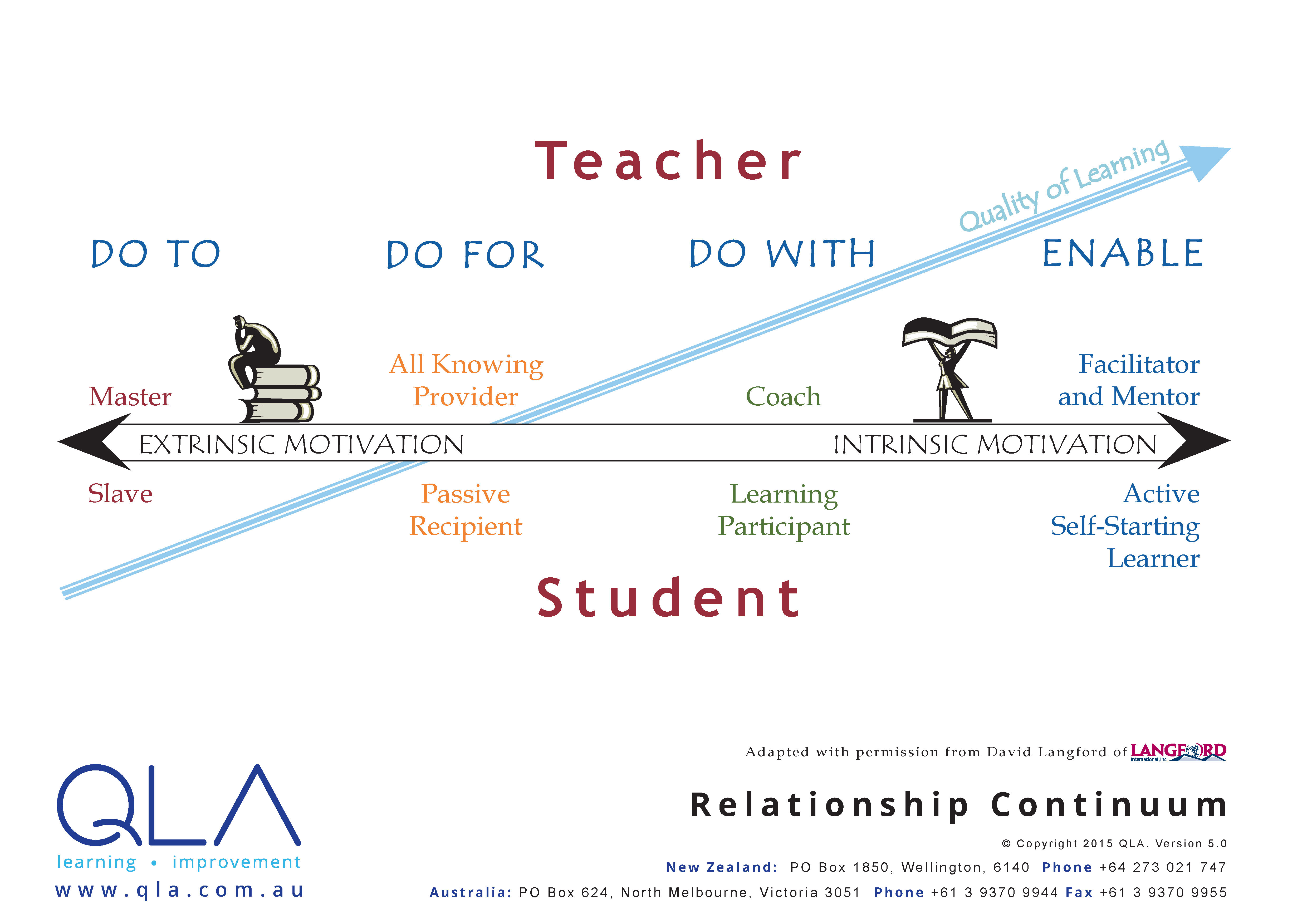Quality Learning in education
So what does Quality Learning do to change our schools and classrooms?
Changing learning roles and relationships
Just as quality improvement in industry changes the
roles and relationship between managers and workers;
Quality Learning changes the roles and relationship
between teacher and students
We find the following model helpful to illustrate the impact of Quality Learning on learning and the roles and relationship between teacher and student. It was developed by David Langford with his students.
The continuum applies equally to the relationship that might exist in any organisation between leader and follower!

With Quality Learning, the teacher’s role changes from that of all knowing provider - controller of learning - to that of facilitator of learning.
Their role is to enable the learner – equipping the student with the necessary strategies - to take responsibility and control of their learning. This involves a shift in reliance on extrinsic motivators to increasingly working with the student to identify and remove the barriers to intrinsic motivation and learning.
The learner understands what they are learning, the process for learning, and how their learning is progressing. Learning is personalised.
The teacher’s focus is to continually improve the system of learning in the classroom.
I am excited and very much inspired. I now have a different way of doing things
and see the possibility and means of transferring the ownership of learning
so that my students can be life-long learners.
David Liew, Seaford 6–12 School, S.A
Quality Learning provides both teacher and student
with the thinking and methods to continually improve
the system of learning in the classroom
Students are equipped with strategies to take ownership of their learning by:
- clarifying the purpose (meaning) for learning
- defining success. Agreeing on Quality Criteria. This provides a vision of excellence (of the standard to be achieved) and enables students to scaffold their efforts.
- setting meaningful learning goals and monitoring their progress. Clarifying what is to be learned (the curriculum) and the depth of learning to be achieved (see Capacity Matrices).
- identifying and removing barriers to learning. Using the Plan-Do-Study-Act (PDSA) cycle to improve learning.
When Quality goes to school
At a whole school level, the same theory and improvement tools are used to support structured, collaborative, continual improvement involving all stakeholders.
Quality Learning provides school leaders with the thinking and methods to lead continual improvement.
This involves stakeholders working together to:
- create shared direction to align effort. Agree on a shared school purpose, vision and values
- establish agreed best school and classroom practices. Agree on, document and continually improve critical processes
- create a culture of continual improvement. Collaborate and involve key stakeholders on improvement teams using the Plan-Do-Study-Act (PDSA) cycle
- collect, display and analyse data to monitor performance and inform your improvement efforts
- capture the improvement gains made. Document processes, policies and supporting documents so they are accessible to all who need them. Build a foundation for conitnual improvement.
Review how your school aligns with the Quality Learning approach by undertaking a Quality Learning School Self-Assessment.
If you would like to share in our experiences, and those of other educators and leaders sign up now to receive our emails.
